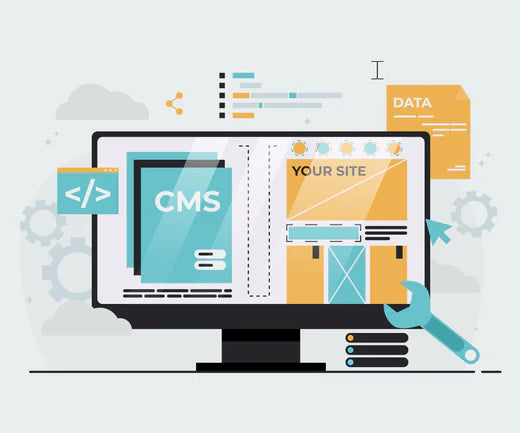
Dilemma in Choosing CMS
Share
10 Proven Strategies for Selecting the Perfect CMS: A Comprehensive Guide
1. Don’t build custom/in-house content management software
It is very enticing to believe that your team can build a custom CMS, including open source. However, we have never seen it work. No matter how much you plan for it, your team does not have the years of experience that lends a capable hand to handling many complexities that come with a CMS. The amount of developer support required in the long-term outweighs the cost of selecting and purchasing a CMS; and not to mention, custom builds are prone-to-fail.
2. Avoid heavy developer reliance
That is a recipe for disaster. Your development speed should not dictate your business moves. Make sure you pick a content management solution that enables your teams to focus on implementing campaigns and strategies that increase web traffic instead of spending excessive amounts of time on managing the technology.
3. Make sure your CMS is scalable
Scalability should come as a no-brainer. Change is inevitable for any growing business, and changes impact your websites. Make sure you choose a CMS solution that can quickly grow and scale as-needed.
4. Choose a CMS that supports omnichannel
Even if your business is currently only leveraging desktop or mobile sites, it’s important to consider other properties that you haven’t, yet, looked into, but could benefit from in the future. Currently, content exists in the form of AR/VR, mobile, kiosks, digital assistants, jumbotrons, and so on, and there is no sign of this slowing down in the future. Make sure you choose a CMS solution that is capable of supporting new channels when you’re ready.
5. Don’t limit your system to one code
No matter how great a content management system is, if there are no proper programmers available, it will fail. Many traditional CMS headaches stem from needing to hire resources that are highly specialized skilled in a specific CMS infrastructure – this can be very limiting and create bottlenecks. Go for a system that allows your developers to utilize his strength and code in their preferred programming language.
6. Support is more important than software
A system could be everything you need, but if the platform team is not available to help you when you need help the most, it spells disaster for everyone. Finding a content management system that allows developers to work without disrupting the creation and management of content is sure to save your business time and money.
7. Be sure to test and get a proof-of-concept first
Before you roll out the CMS for your entire site, make sure to test the CMS and get a proof-of-concept. Implement a section of the website first and get team members and end-users to check everything from creating and authoring pages to establishing a workflow process. Testing mitigates many issues that may not have been apparent and saves you a lot of time and money.
8. Choose a UI that is intuitive
Having a user-friendly interface is especially important if you have a team that will be living in the system every day. They’ll need a solution that is easy to use, does not require a lot of technical know-how or training, and can quickly pick it up when they log back in.
9. Make sure the CMS has APIs and supports integrations with other apps and microservices
Whether you want to incorporate personalization to your marketing strategy or want to get deep insights into your users' web interactions and behaviors, businesses, like Partners and Marketing, require very different apps and microservices to manage their day-to-day work on the website. Marketing demands a solution that can easily integrate with marketing automation tools, business intelligence tools, Google Analytics, and RSS to deliver personalized content. Partners need to connect with devices like partner management platform, such as NetSuite, to better manage partner alliances. Pick a CMS solution, like a headless API-first CMS,that has robust APIs and lets you easily connect with third-party content management tools.
10. Visualize and organize your website correctly
One of the first things you should do when you’re implementing a new CMS or rolling out a redesign is to bring all of your stakeholders into a room and gather their requirements and input. Failing to plan is planning to fail. Half the battle is developing a well-thought-out content organization and taxonomy that helps your business meet its goals to succeed.
